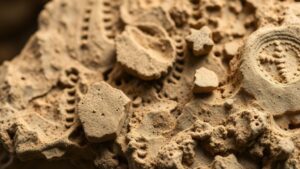Leveraging NOAA Bathymetric Maps for Sunken Shipwreck Treasure Exploration
Leveraging NOAA Bathymetric Maps for Sunken Shipwreck Treasure Exploration
The exploration of sunken shipwrecks has long captivated researchers, treasure hunters, and maritime historians alike. One of the most valuable resources available for this endeavor is the bathymetric maps provided by the National Oceanic and Atmospheric Administration (NOAA). These maps play a crucial role in identifying underwater features and assessing archaeological sites, significantly enhancing the efficiency and effectiveness of treasure exploration.
Understanding NOAA Bathymetric Maps
Bathymetric maps portray the underwater topography of the ocean floor, illustrating depth variations and the shapes of submerged geological formations. NOAA utilizes advanced sonar technologies and remote sensing methods to compile these maps. According to NOAA, there are approximately 2 million square miles of U.S. waters that have yet to be accurately mapped, highlighting the vast potential for exploration.
Historical Context of Shipwrecks
Shipwrecks are often time capsules of history, allowing researchers to study maritime trade, naval warfare, and cultural exchanges. For example, the wreck of the Spanish galleon Nuestra Señora de Atocha, lost in 1622 near the Florida Keys, has since been investigated using similar bathymetric technologies. The recovery of over $450 million in gold and silver from this site underscores the potential wealth hidden beneath the waves.
Application of NOAA Data in Shipwreck Exploration
NOAAs bathymetric data significantly assists maritime archaeologists by providing a three-dimensional view of the ocean floor. This data can be used to:
- Identify potential shipwreck sites by revealing geological features like ridges, valleys, and underwater canyons where shipwrecks might have settled.
- Plan underwater surveys and exploration missions effectively by determining which areas are of greatest interest and accessibility.
- Enhance the precision of remotely operated vehicles (ROVs) used in exploration, allowing these devices to navigate complex underwater terrains better.
Case Studies of Successful Maritime Excavations
Several recent explorations showcase the effective application of NOAA bathymetric maps in treasure recovery. For example, in 2017, the research vessel Okeanos Explorer utilized NOAA’s bathymetric maps to locate the wreck of the USS Independence (CVL-22), an aircraft carrier sunk during World War II near the Farallon Islands, California. The maps facilitated the identification of debris fields and structural remains, allowing archaeologists to document pieces of history that had remained hidden for decades.
Also, NOAA has supported the recovery efforts of the USS West Virginia, sunk at Pearl Harbor. Utilizing detailed bathymetric maps, divers were able to locate the wreck and perform significant archaeological studies that yielded artifacts providing insight into shipboard life during the attack.
Challenges and Considerations
Despite the advantages that NOAA bathymetric maps provide, challenges remain. accuracy of bathymetric data can be influenced by various factors, including:
- Turbidity of the water, which can obscure underwater features and complicate mapping efforts.
- Changing ocean currents and sediment displacement, which may alter the landscape of potential wreck sites.
Also, while navigation and mapping technologies continue to improve, shipwreck explorers must be mindful of legal regulations surrounding shipwreck salvaging. The Abandoned Shipwreck Act of 1987 and the Sunken Military Craft Act of 2004 establish protection for these sites, making collaboration with local and federal authorities essential in any treasure recovery effort.
Future Directions in Shipwreck Exploration
Looking to the future, the integration of bathymetric maps with advanced technologies, such as artificial intelligence and machine learning, may revolutionize shipwreck exploration. These technologies could help identify new patterns and features that traditional mapping approaches may overlook.
Plus, expanding public access to NOAA map data through online platforms could foster collaborative exploration efforts, engaging citizen scientists in maritime archaeology–a burgeoning field ripe for discovery.
Conclusion
The intersection of NOAA bathymetric maps and shipwreck treasure exploration not only enhances the chances of recovering valuable artifacts but also enriches our understanding of maritime history. As technology evolves, the potential for new discoveries remains vast, promising an exciting future for underwater archaeology.
To maximize the benefits of NOAAs resources, explorers should prioritize proper legal channels and collaborative efforts, ensuring that both treasure recovery and heritage preservation go hand in hand.

